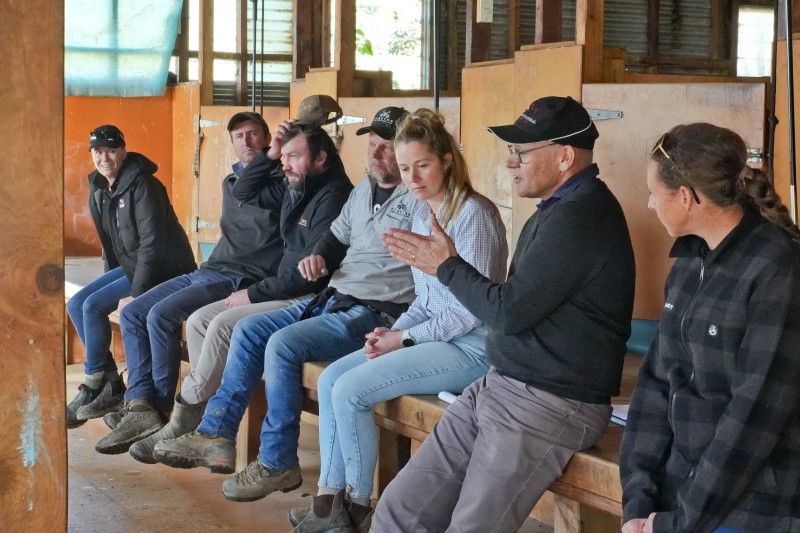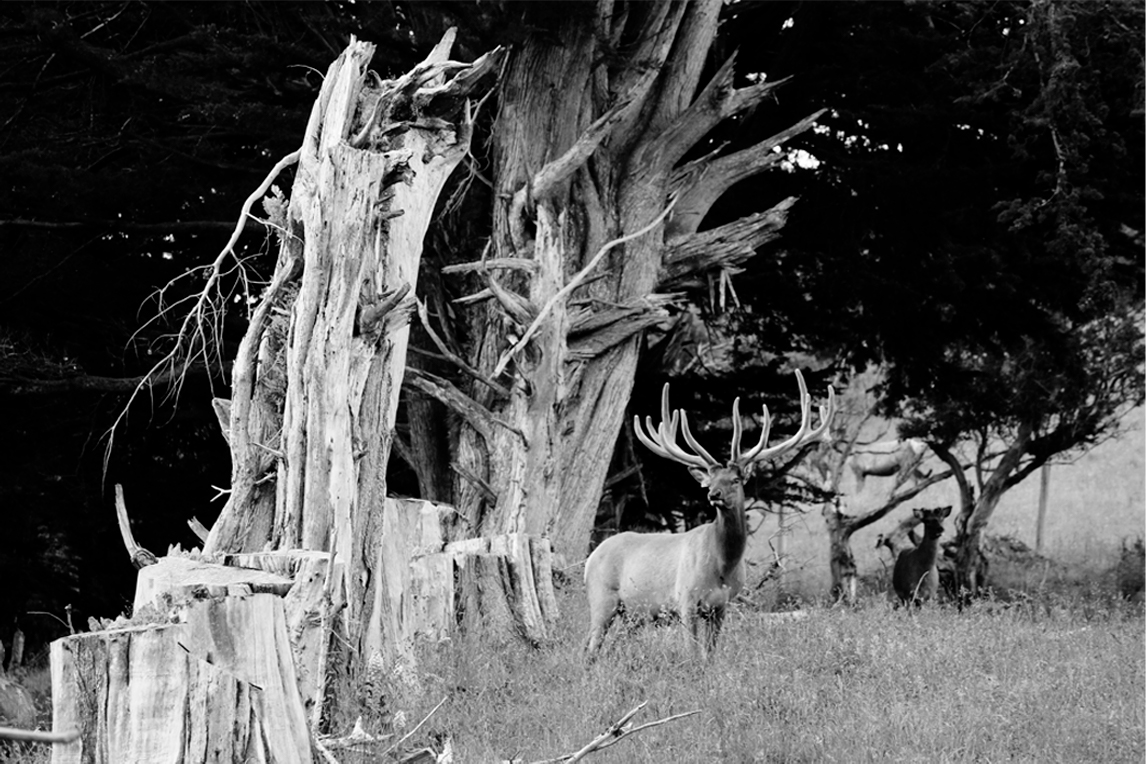Aug 22, 2025

Wayne Allan (second from right) speaking at a May field day on the benefits of farming mixed species. Allan says returns for both deer breeding and finishing currently compare well with other livestock systems.
Deer have resumed their status as a profitable land use option, according to a recent gross margin analysis by Canterbury farm consultant Wayne Allan.
Despite the rapid lift in sheep returns over the past 12 months, deer farming remains an attractive alternative, particularly for those with existing infrastructure. Allan credits the rise in deer status to a more stable venison market due to a diversified marketing strategy creating year-round chilled and frozen demand and less volatile prices.
Backing the narrative are compelling gross margin analyses for hind breeding and weaner finishing systems.

Wayne Allan
The typical gross margin for a breeding hind sits around 16 – 18 c/kgDM and the industry is striving to lift this to 21 c/kgDM-plus through a combination of improved prices, fawning percentages and weaning weights, Allan says.
But the benefits of including hinds in a mixed system go beyond income generation. In a hill country mixed livestock system, the feed demand of a hind complemented ewe feed demand and pasture growth. A breeding hind had modest feed requirements in early spring, freeing up feed for ewes whose demand ramped up in August, September, and October, he says.
Finishing deer, lambs or cattle was riskier business due to the unknown end price, and the supply/demand for livestock which could quickly erode margins. A finisher, regardless of livestock species bought, typically targeted a margin in excess of 25 c/kgDM for short-term options and closer to 35 c/kgDM for longer-term options. Allan’s gross margin analysis for finishing showed that both fast-finishing hybrids and medium red stags sat comfortably within this range.
As an aside, Allan noted how the emergence of elk contracts, encouraging farmers to hold on to animals longer to achieve heavier weights, could lead to the rise of a spring store market, which could be an attractive option for farmers in summer dry-prone regions.
In summary, deer offered the opportunity for diversification and improved profitability, especially in hill country with existing deer infrastructure. Weaner finishing compared well against lamb and beef finishing, and dairy heifer grazing. The deer finishing margins were good, but it was a higher risk enterprise than breeding hinds. The margin from breeding hinds was lower, but they were easier to source and there was flexibility to finish progeny or sell them on the store market depending on market and seasonal conditions.
For detailed gross margins on breeding hinds and weaner deer finishing, see Deer Industry News due out in September.

